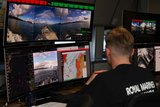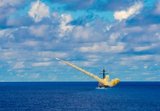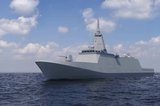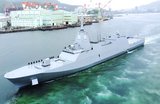USCG to test new SAR capabilities
The US Coast Guard (USCG) Research and Development Center (RDC) will participate in the Arctic Chinook field exercise to test the Next Generation Incident Command System (NICS) and new radio and internet communications systems for Arctic rescue operations.
Arctic Chinook is scheduled to be held 22-24 August 2016 and aims to address the need for Arctic search and rescue capabilities due to commercial expansion into the region.
NICS is a web-based system developed by the Department of Homeland Security and the Lincoln Laboratory at the Massachusetts Institute of Technology. It guides users through standard incident response procedures and helps to organise search and rescue operations, accelerating the procedural process and allowing response commanders to chat with teams, send photographs and track assets using GPS.
The system is available in two formats, a desktop computer version and NICS mobile, which can be downloaded to any smartphone. Arctic Chinook will use both formats.
During the exercise, coast guard cutter USCGC Alex Haley (WMEC-39) will simulate a catastrophic event on a cruise ship forcing 250 crew and passengers to abandon ship. The mock accident will require the coast guard, the Canadian Air Force and the Alaska National Guard to work together for the rescue operation. The first responders will have to evaluate and prioritise evacuation of the mildly to severely wounded passengers and crew.
The RDC will also use the exercise to test new communications systems in Arctic environments. The USCG will test an inflatable Ku-band satellite dish for satellite internet connection to the NICS. Point-to-point line of sight transmitters will beam the signal from the satellite dish to the various command stations, and broadband data links will provide a wireless network for first responders.
The coast guard will also set up a network of mobile transmitters to provide smartphone coverage to critical areas. These tests will allow the RDC to investigate new options to improve communications in difficult Arctic environments.
More from Naval Warfare
-
![NATO tests use of “undetectable, jam-proof” laser communication in maritime scenarios]()
NATO tests use of “undetectable, jam-proof” laser communication in maritime scenarios
As part of its effort to better prepare its capabilities for operations in contested and congested scenarios, NATO evaluated a Lithuanian ship-to-ship terminal designed to not be susceptible to enemy interference.
-
![US Navy advances with the Harpoon Service Life Extension Programme]()
US Navy advances with the Harpoon Service Life Extension Programme
The US Navy plans to improve Harpoon’s anti-ship and land attack capabilities by equipping the missiles with sensors and technologies required for succeeding in future battlespace.
-
![Mitsubishi eyes future with Australia’s Mogami selection]()
Mitsubishi eyes future with Australia’s Mogami selection
With Australia’s selection of the Mogami-class for Project Sea 3000, Mitsubishi is investigating local production in the next decade as potential export opportunities emerge.
-
![Thales’ new Sonar 76Nano could equip UK Royal Navy on anti-submarine warfare missions]()
Thales’ new Sonar 76Nano could equip UK Royal Navy on anti-submarine warfare missions
The new sonar is designed to equip uncrewed underwater vessels, with the potential to be used by the Royal Navy for its Atlantic Bastion and Atlantic Net missions.
-
![Hanwha wins Australian government approval to increase its stake in Austal]()
Hanwha wins Australian government approval to increase its stake in Austal
The contract would mean the two shipbuilders can collaborate strategically and enhance shipbuilding capabilities in Western Australia.























